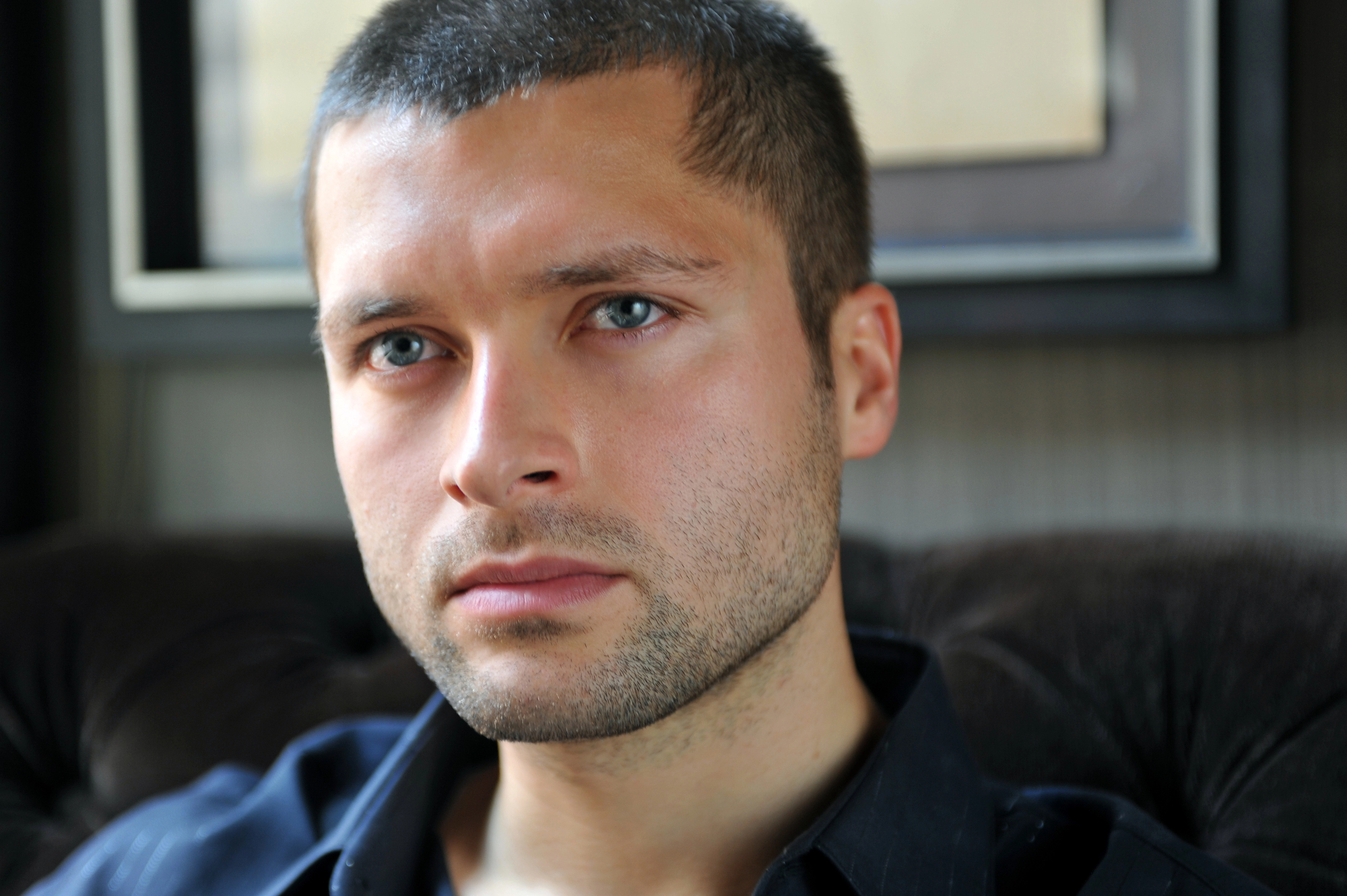“Who am I?”
Just about all of us have pondered this question, whether it’s while lying in bed awake in the wee hours of the morning, or after being asked that question by a complete stranger at a dinner party.
Some feel that they have a pretty strong grasp of who they are, while others might try to keep chewing their prawn crackers as long as possible so they can come up with a witty answer.
If you have difficulty coming up with a solid response to this question, the Buddhist concept of Anatta, or “no-self” might be of interest to you.
Basically, it’s the idea that there is not, in fact, a “you” at all.
Let’s dive a little deeper, shall we?
Who Are You, Really?
Take a moment to consider what it is that makes you “You.”
Is it your skin? Your body? Your facial features? Your personality?
If your response is to look in the mirror, identifying self with the body you see before you, take a moment to consider that most of the cells in your body are constantly dying off and regenerating.
Red blood cells only last a few months, so the blood coursing through your veins right now is not the same blood that will be sloshing around in there by this time next year.
Some cells take a bit longer, but that body o’yours is in a constant state of change.
If you had plastic surgery to change some of your facial features, would you still be you?
How about if you got a tan? Or a condition like vitiligo, which makes your skin lose pigmentation?
If you lose a limb in an accident?
Let’s consider your thoughts, your opinions, and your personal preferences. Do you have the same thoughts from one moment to another?
Have your interests and leanings changed over the years?
Do you follow the same religion you were raised with, or have you chosen to walk a different path?
If your body and thoughts change so much, then who exactly are you?
Skandhas: The Five Aggregates
In Buddhism, there is the idea of skandhas (Sanskrit for “groupings” or “collections”), which refers to five factors that makes up a sentient being’s existence.
These are:
- Rupa: the matter that has combined to create the being’s temporary form (so, all the cells and physical bits and bobs that have made your body).
- Vedana: sensations associated with that form, such as pleasure and pain.
- Samjna: perceptions, such as identifying tree species.
- Sankhara: thoughts, ideas, the “imprint” of things.
- Vijnana: consciousness and awareness.
These are amalgamated into an individual being to create a whole, but they themselves are constantly changing.
Each is ephemeral, so the being might appear to be solid, it might communicate and feel hunger and have interesting thoughts about the world around itself, but every aspect of what makes it what it is, will change in a heartbeat or two.
There is no constant, no lasting wholeness of “self,” but rather just a temporary, insubstantial cohesion, made of parts that will dissipate again shortly.
Does that clarify anything? Or just add more confusion?
The Ocean Parallel
One of the best ways to explain things is by thinking about the ocean. Bear with me a moment, here.
When the average person thinks of the ocean, they feel that they have a pretty good grasp of what it is.
The ocean is a large body of water, right? People swim in it, boats sail on it, and it appears on countless postcards around the world.
It’s the OCEAN. We all know it.
Okay, but it’s so much more than that. The thing we call the ocean is just an outward appearance, full of waves and sparkly foamy bits.
The water in the ocean is impermanent: it is filled by rainfall. Water molecules that have travelled around the world, through underground water tables, sneezed out by humans, dissolved through tree xylem.
It evaporates as mist when it crashes against rocks or steam as it hits fresh lava, and rises into clouds.
It trickles into canals, freezes into ice floes. It is made of all the particles that float around its molecules, houses countless animals and plants that are born, live, and die, every moment.
It is impermanent, and ever-changing.
Much like us.
So then, what is the ocean? This planet was once covered in water, and oceans have roiled around here for over 4 billion years.
Was that ocean the same as the one you see today? No. And yet, it is The Ocean.
You may also like (article continues below):
- How To Get To Know Yourself Better In 7 Questions
- 4 Buddhist Beliefs That Will Shift Your Understanding Of Life And Make You Happier
- How To Reach Nirvana By Walking The Noble Eightfold Path
- Why Letting Go Of Your Expectations Will Lead To Greater Happiness
- How To Overcome The Fear Of Change And Confidently Face New Challenges
- 4 Types Of People Most Likely To Suffer An Existential Crisis
Soul Self VS No Self
For many people, their idea of self refers to the idea of a soul: their spiritual/energetic nature that has remained a constant throughout their lives.
Those who believe in reincarnation may believe that this soul self came into being a gazillion years ago, and has been experiencing existence in different forms since the dawn of time.
Let’s go back to that ocean we were just talking about, and imagine that someone takes a glass and scoops it full of ocean water.
This water represents a human life.
The Hindu concept of reincarnation would consist of that water flowing from one glass into another, and then another, of all different shapes and sizes (glasses, mugs, cups, buckets, a shoe, etc.).
With Anatta, the concept is quite different.
Referring to the ocean again, all the thoughts and particles that made up a sentient being eventually disperse, much like pouring that glassful of water back into the ocean.
If rebirth happens, it’s a situation of another glass being dipped into the ocean to be filled up again.
There may be a couple of molecules and particles from the previous glassful in this new one, but it’s completely different than the previous.
At the same time, it’s still ocean water, right? It’s still the ocean in a single glass.
The concept can be quite dizzying, but is great for really being aware of the oneness of all other life on this planet. That we are all ephemeral, temporary creatures that are comprised of everything that ever was, and ever will be.
Furthermore, it allows us to let go of all kinds of suffering (or Dukkha) related to the ego, its desires, and its aversions.
If there is no self, there is no lack, so there is no reason to desire.
Letting Go Of Attachment To “I AM”
It’s very difficult for most people to wrap their heads around the idea of there not being an “I” to identify with.
After all, from day one, we’re addressed by a name that we’ve been assigned, we develop food preferences and favorite colors, discover topics that fascinate us, and follow career paths that (hopefully) engage us.
As such, to suddenly be faced with the idea that all of that is an illusion can range from being mind-blowing, to terrifying.
We’re used to describing ourselves in myriad ways, from the titles bestowed upon us via birth or education, to identifying with illnesses and types of victimization.
I am a lawyer.
I am a musician.
I am a countess.
I am a disease survivor.
I am a parent.
I am a psychiatric patient.
I am a doctoral candidate.
Well, all of those are aspects of the temporary self, but if there is no “you,” then all of those labels are rendered moot. You might as well try to label the wind.
If there is no “I”… then what’s all of this hilarious existence about, then? What’s the point?
The point, ultimately, is to just BE.
To experience things utterly in the moment and then let them go, without getting attached to one thing or another, since everything is going to change in a second anyway.
There is remarkable peace and stillness when one allows oneself to let go of ego-driven obsessions, and dwell in that empty space between heartbeats.
The next time someone asks you who you are, respond by saying “I am,” for this is the only true and accurate answer you can give.
What do you think? Do you find the concept of Anatta to be comforting, or confusing?










